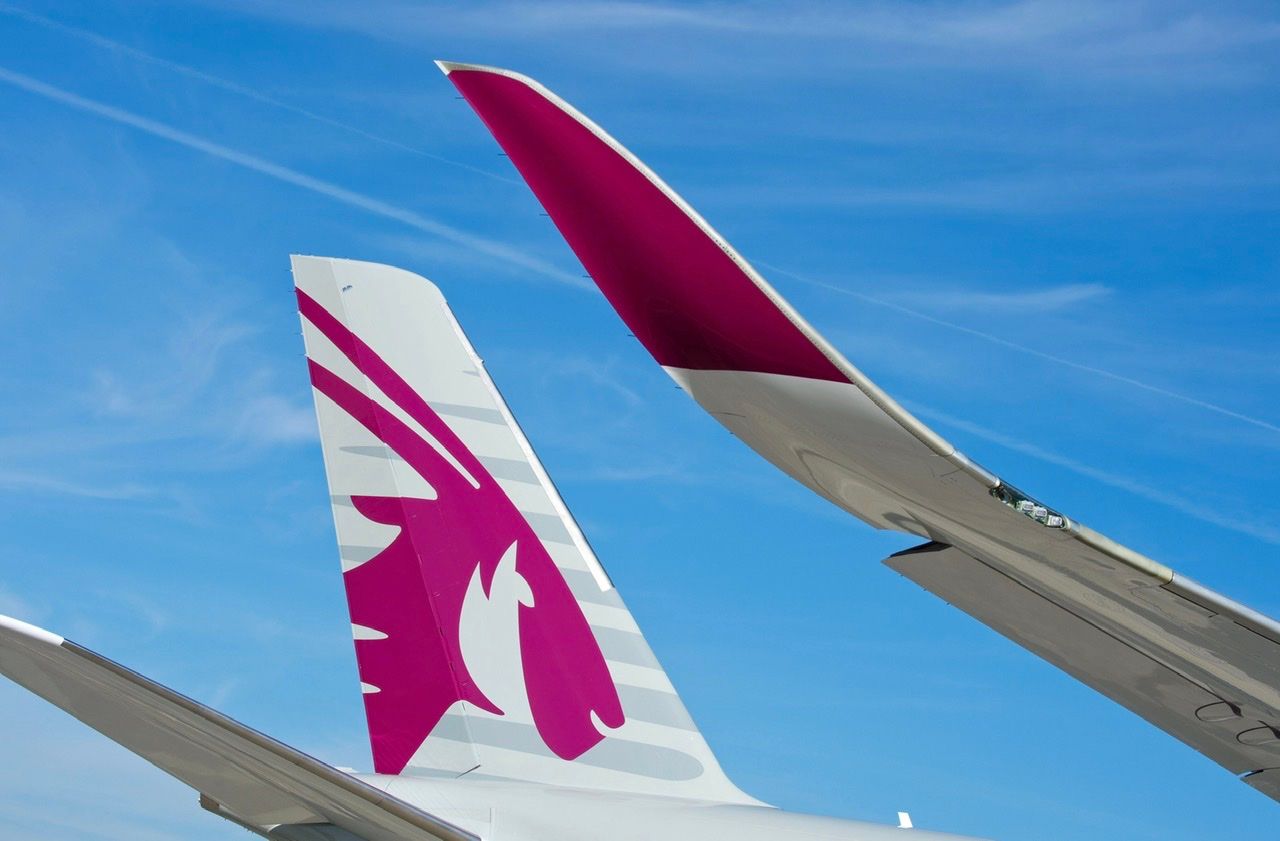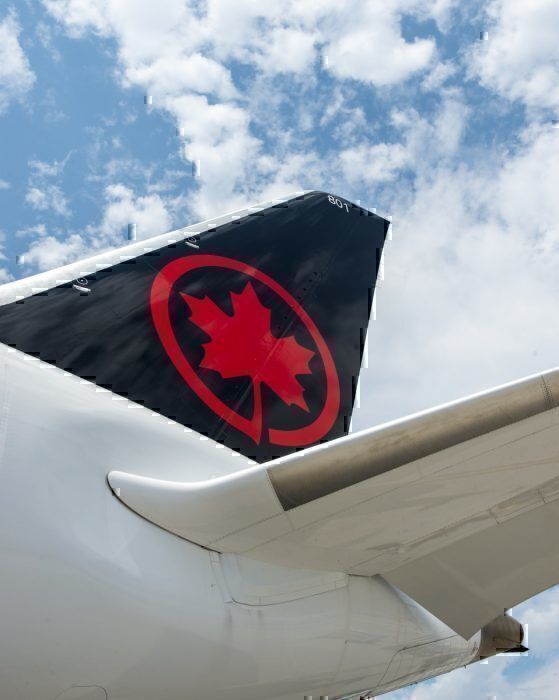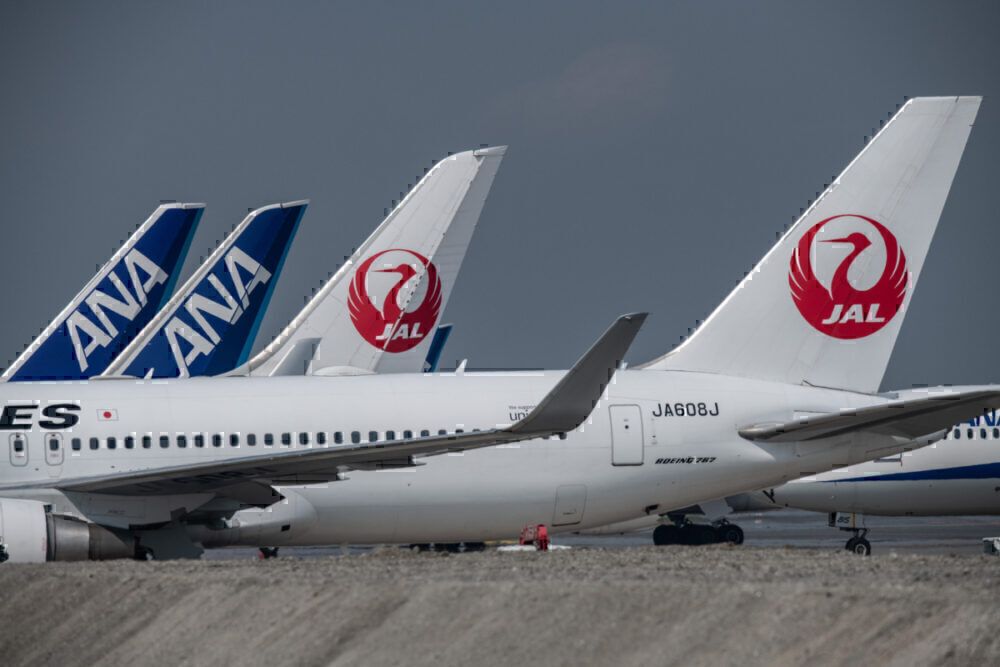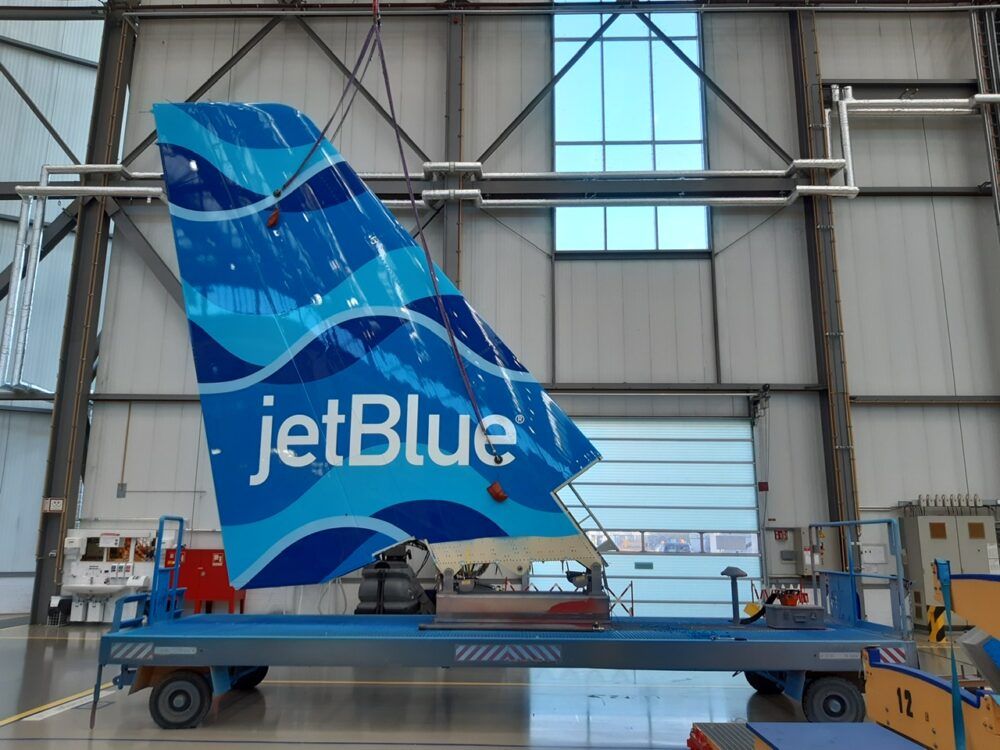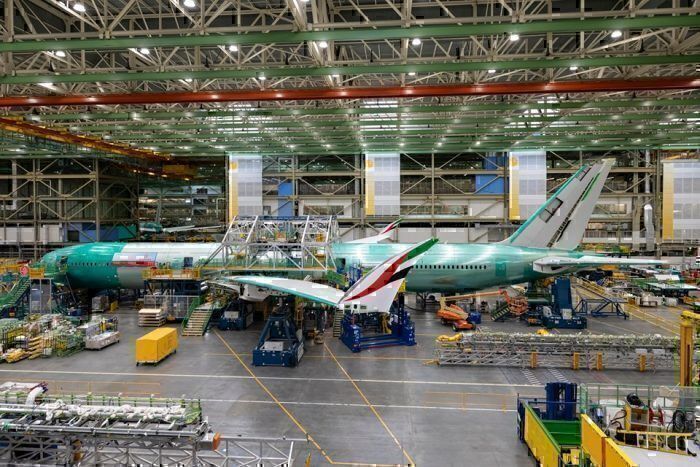Whenever you see aircraft being built, you might have noticed that their tails are fully painted in the future owners' livery. Why is this the case? Simple Flying investigates.
Preliminary thoughts
We make no claims here at Simple Flying that we are aircraft engineers; it is undoubtedly a complex manufacturing process to build the mechanical birds we love so much. Yet, we have questioned why the tails on these aircraft always seem to be completely finished and painted, despite the rest of the aircraft being far from complete.
Not to leave members of our audience uninformed about this pressing issue, the entire team dropped everything to work on researching this very question.
Initial theories
Doing some initial probing reveals a colorful variety of different suggestions:
- Because it's easier to paint the tail when it is being built and flat, rather than on the back of a plane. This doesn't make too much sense as they are able to paint the rest of the aircraft, so the tail should provide no challenge.
- To give the painters something to do whilst they wait for the builders to finish.
- The components of the tail are different materials and thus need a different way to color and paint. It is possible that the tails, which are normally built elsewhere, are different enough that they require special technologies not available in the normal paint shop.
- If the airline cancels their order, the aerospace builder has not wasted time and money painting the whole aircraft, just the tail.
- Like the above, perhaps it is just cheaper to paint the tails elsewhere. Perhaps Boeing and Airbus are supplied the 'done' tails, which includes painting.
- To help the engineers tell which plane they are working on. Obviously this is the least likely to be true (and we know how many aircraft engineers read Simple Flying!) but we couldn't help but laugh when we found it.
Creating excitement
Last month, JetBlue shared images of the tail livery of its new Airbus A321LR aircraft. The low-cost carrier will utitlize these 'Streamers' on its upcoming operations to London from Boston and New York next year.
The revelation of the tail livery recreated a buzz for the highly-anticipated aircraft and services. While the rest of the aircraft was yet to be painted, at least JetBlue and Airbus had some livery to stir up excitement for the project.
Even if this isn't the primary reason for painting the tail first, it can be effective tool for these purposes. Altogether, JetBlue isn't the first airline to reveal photos of its tail livery before the whole plane is finished.
The real reason the tails are painted
However, there is one reason that is far more compelling than any of the above according to the Aviation Stack Exchange and Airliners.
The tail, also known as the rudder, needs to be painted before delivery to ensure that it is perfectly balanced and takes into account the weight of the paint. As it is a specialty shop that builds these rudders, it makes sense that they would do the careful painting to ensure that it is completely flawless.
If the rudder is unbalanced, then an effect called 'flutter' can occur. This is when the rudder leans into the heavier side (and yes, too thick a coat of paint can cause this) causing the aircraft to list to the side. As aircraft are most affected by cross-winds during take-off and landing, this can cause huge problems and even bigger safety issues.
This rule also applies to anything aerodynamic, like winglets or the new 777X folding wings.
The key point
Altogether, Hachi Ko, a former air accident investigator and air traffic control worker, summarizes the reasoning for the tail to be painted first via Quora. He concludes that in most cases, the tail is produced in a location other than the assembly point and arrives 'finished.'
As the tail (vertical stabilizer) is a primary aerodynamic surface, it must be balanced adequately. The paint is a crucial part of the weight and balance of the tail. So, for it to be complete and ready for assembly, it must be built entirely, with the paint included.
Did you guess the correct reason why the aircraft tail livery is painted first? Or perhaps you have a different theory? Let us know what you think of this process in the comment section.

